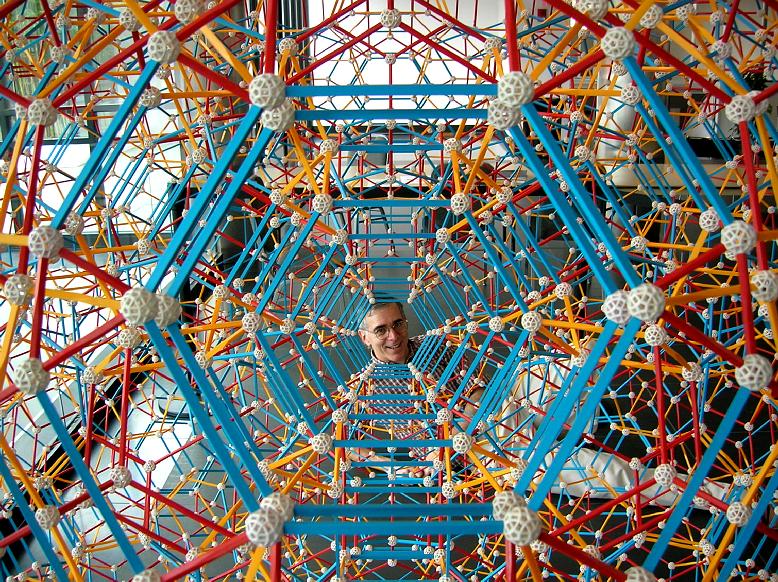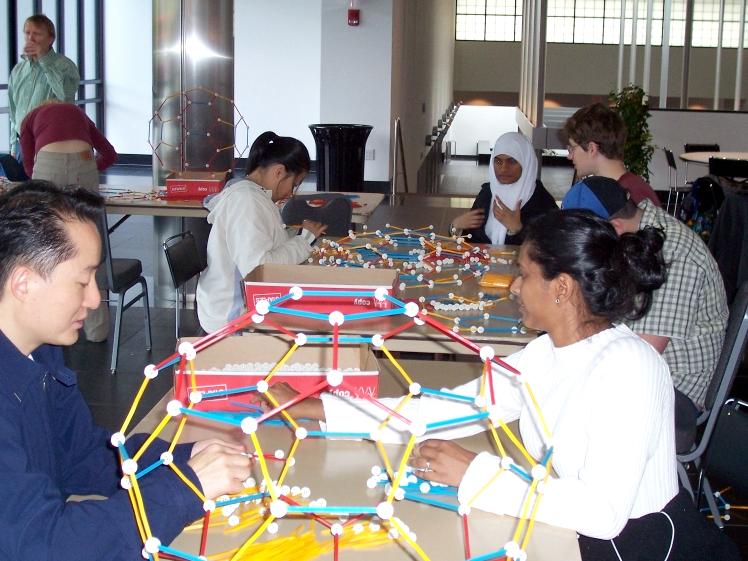An
interdisciplinary activity and
exhibit, that blends
art,
mathematics,
computer science, and traditional Asian
culture.
The image above shows me feeling good about completing this
intricate
geometric construction. On monday, April 24, 2006, I asked
students,
faculty,
and staff to help me create a modern-day
sangaku in Stony Brook
University's Wang center. This is a celebration of the beauty
of
geometry, in the form of a large geometric sculpture.
Thank you
everyone who participated.
We started at 10:00AM,
working on a
series of modules in five different shapes.
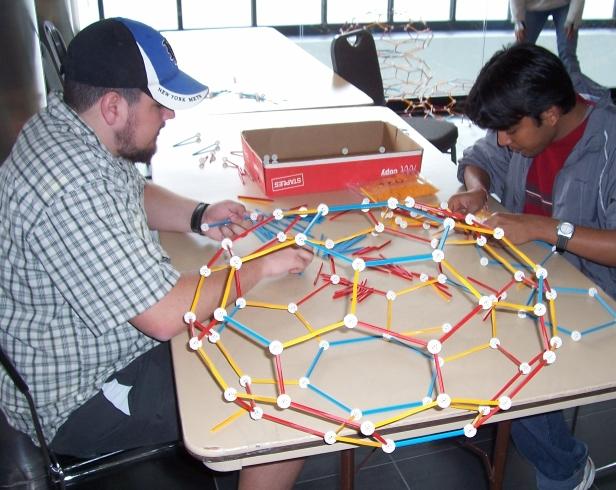
Each module is a projection of a truncated icosahedron, but
there are
subtle variations between them.
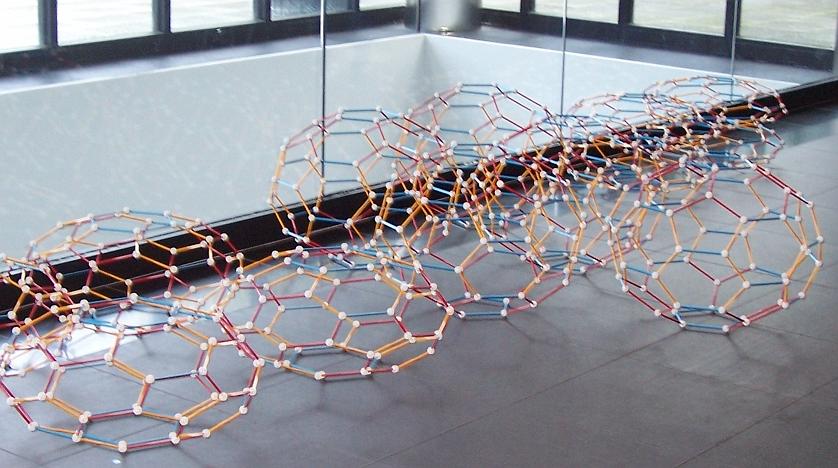
We began to accumulate the 75 needed modules.
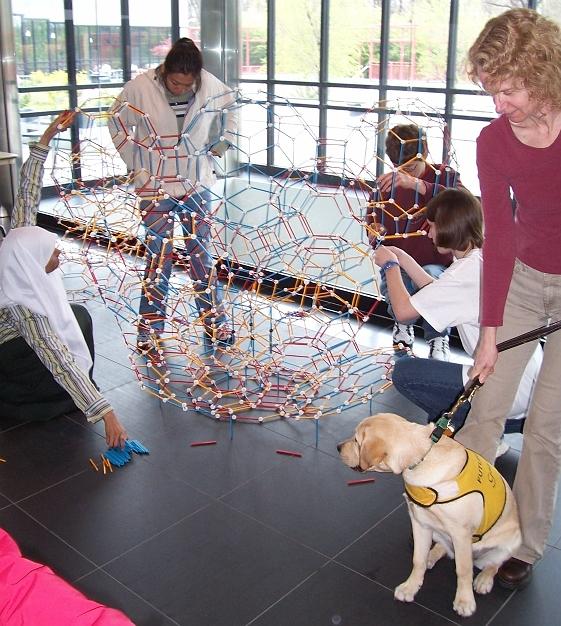
We then started the core and strengthened the base.
(One
participant just
likes to chase balls...)
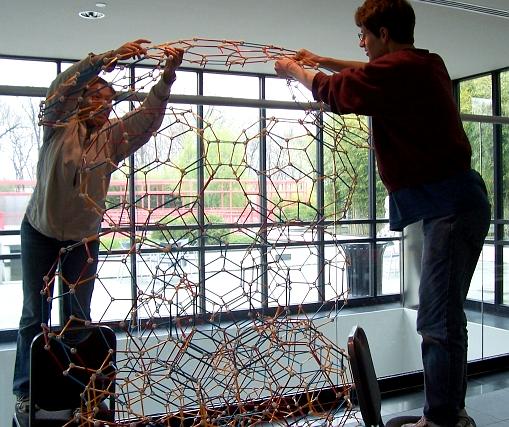
We worked up the central axis to the very top.
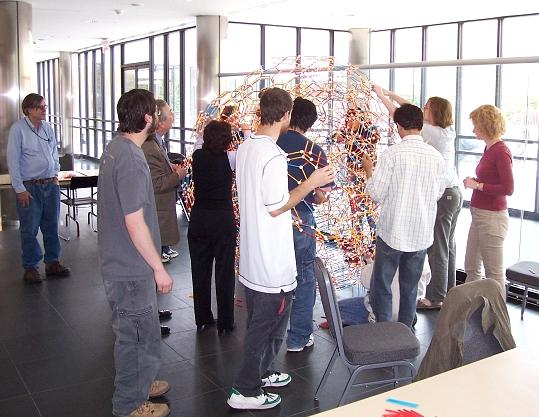
Then many people could construct from all sides attaching
modules.
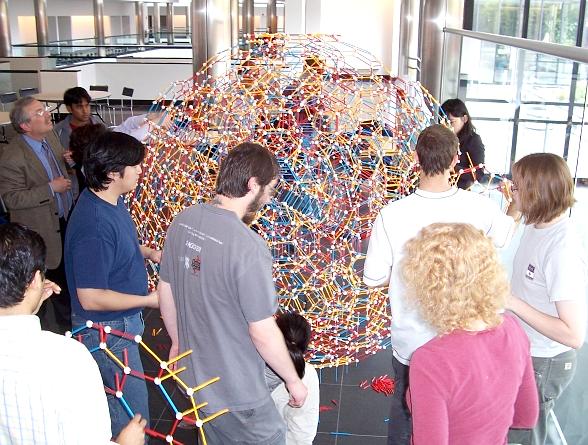
The sphere is 6.5 feet in
diameter.
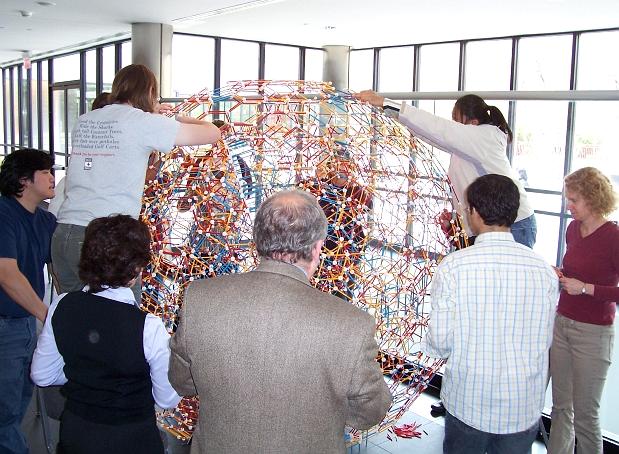
Standing on chairs, we could reach the top parts.
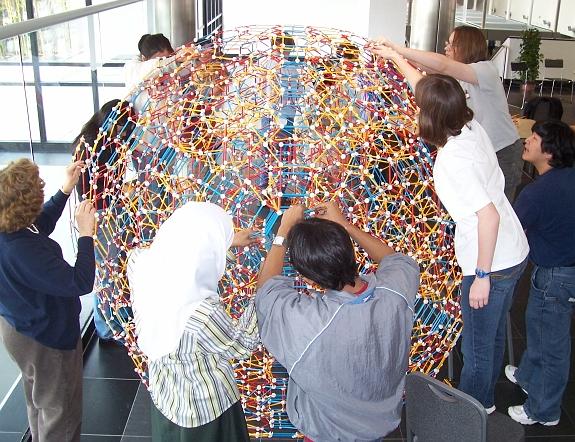
The outer layer of 30 flat modules went quite quickly.
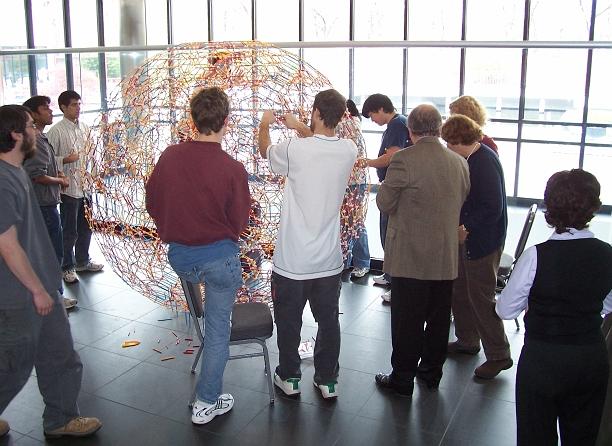
We finished at 2:00, so the total time was four hours.
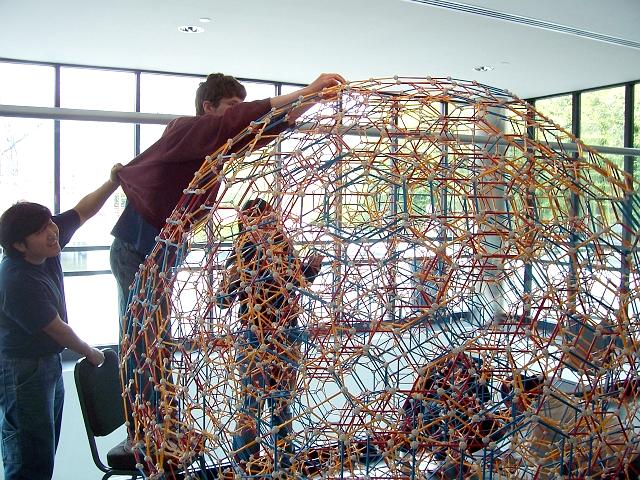
Here, the very last of the 10800 plastic
components is attached.
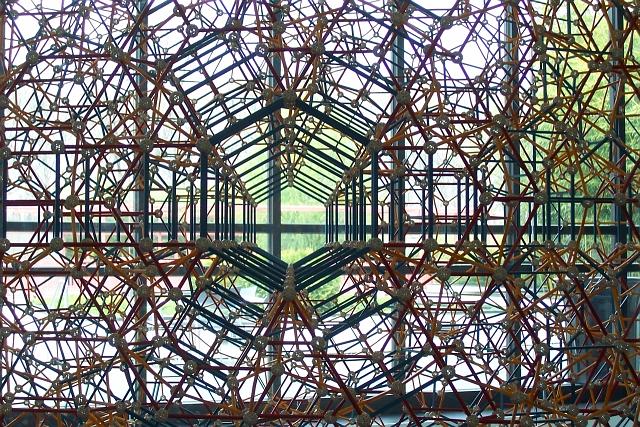
I believe no one has ever made a physical model of
this mathematical structure, so this is a world premier
event.
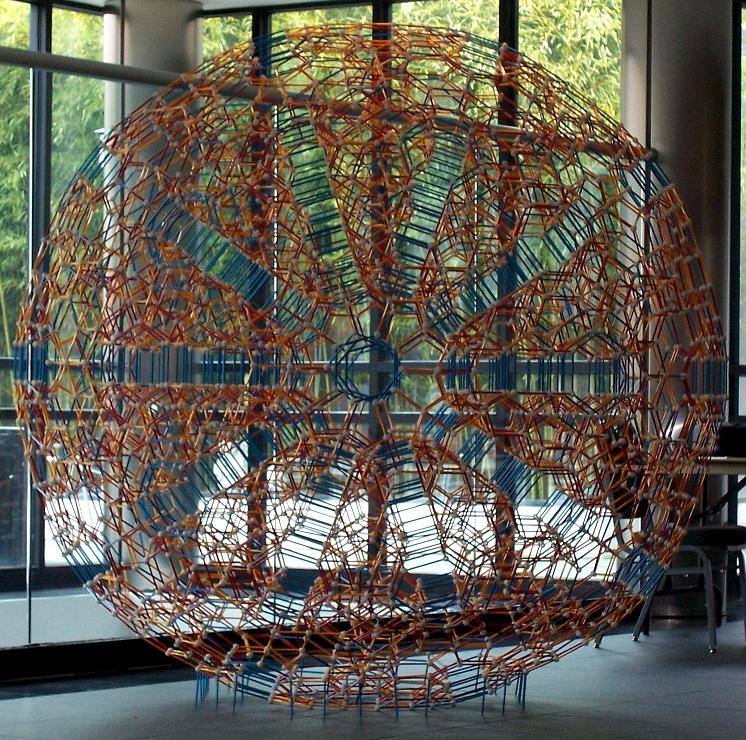
It looks very cool
when you
step back and view it down a 5-fold axis of symmetry.
I like to feel that my work fits in with
the Japanese tradition of
sangaku.
This is
a display by devotees colorfully
celebrating the
beauty of geometry in a peaceful temple-like setting. For
background
information on traditional sangaku, see
the event
announcement page.
It is scheduled to remain on
display for two weeks, until the end of the semester. I will
have
a small disassembly
event on friday May 5 when we take it apart and pack up the
pieces.
Mathematically the form is a three-dimensional projection of a
uniform
four-dimensional polytope that doesn't have any reasonable
name. One
name (used in Norman Johnson's upcoming book on uniform
polytopes) is
The
Cantitruncated 600-cell. I'd
prefer to call it
The
Truncated Ambo
600-Cell (because that may help one to visualize
it).
Whatever you call it, four polyhedra meet at every vertex: a
truncated
icosahedron, a pentagonal prism, and two truncated octahedra.
It is one
of fifteen uniform polytopes in a family with the same
symmetry, and
which can be made in projection with these Zometool parts.
Thank you
Zometool for
loaning
me the parts for this event.
Photos by Kara
Greenfield,
Joseph Mitchell, and George Hart.
